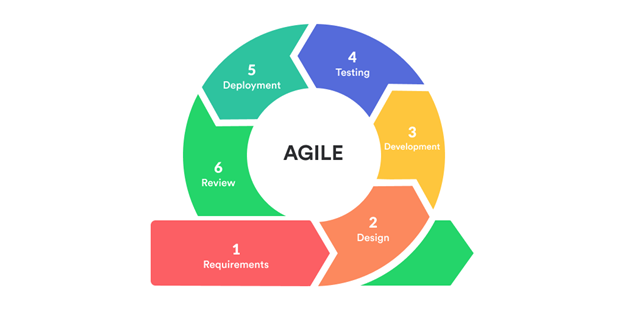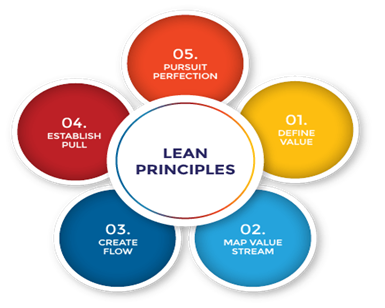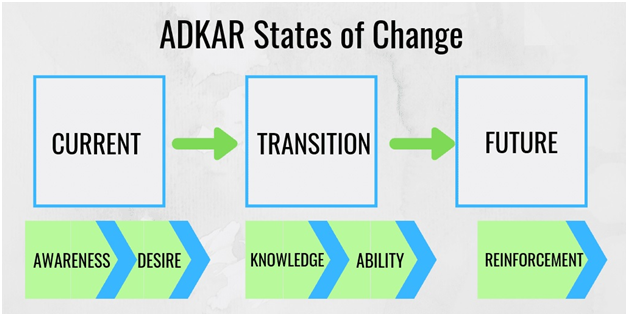Lean Transformation project management assignment on Ampol Fuel Station (Sydney)
Question
Task: Describe the project management methodology and create a visual representation of the associated project lifecycle that best suits the proposed lean transformation project. Discuss 5 lean principles as they relate to the projectmanagement assignment. Using the ADKAR model to describe how you would management the change necessary to implement the lean transformation project.
Answer
Case Study Organisation and Lean Project Background
The organisation under focus in the project management assignmentis Ampol Fuel Station (Sydney), one of the many fuel stations run by the Ampol group all around Australia. Although designated as a fuel station, each station facility includes designated refuel area, a convenience store, a food and coffee area and other amenities like restroom. A Gemba walk was conducted on one such station (current workplace) in order to identify a lean waste(Miieta et al., 2022). Lean waste as per the project management assignmentis basically nothing but a specific type of resource that is being wasted despite being available and having the potential to enhance the performance of the work place. There are eight different types of recognised lean wastes, one or more of which might occur in any work place. In this specific work place, based on the Gemba walk, it has been identified that a major lean waste is inventory. The inventory in the convenience store section is a major waste – the inventory updates are done very late and not on regular basis and as a result, a significant amount of inventory space is wasted even if some of the products have constant demands from the customers. Again, there are certain items as per the project management assignment that is being kept in the inventory for way too long even if there is no demand from the customers. In this case also, significant inventory space is wasted completely. Hence, lean transformation project management assignmentis required to resolve these issues and to maximise the efficient use of the inventory in the store. This transformation process involves development of an automated inventory management software.
This project management assignmentfocuses on explaining the project methodology to be used in the transformation process and also lean principles that are related to this project. Additionally, ADKAR model is used to define the change management that will be necessary in the project.
Project Management assignment Methodology
There are choices of waterfall and agile methodology to be used in the project management assignment. It is important to choose the right methodology for this particular project in order to get the most of out of the project. In order to determine which methodology is most suitable for the project, it is first important to determine the type and nature of the project management assignment.
Project Description and Type
This is a lean transformation project management assignmentthat will involve a major overhaul of the current system that will help to resolve the issues caused by the lean waste identified. In this case, it has been identified that the main lean waste faced by the organisation is inventory –lots of inventory space is wasted due to lack of efficient management. Due to updating manual records only after receiving demands from customers once the stock is empty, the company is losing a significant amount of revenue that could have been earned if on demand items were restocked efficiently and within the right time. Another major issue is that there are large numbers of items that have virtually no demand and they are also wasting significant inventory space.
The suggested solution for the project management assignmentis to develop a software based product inventory system that will update records automatically without manual control. The inventory system will record data from the product sales and will update the inventory record accordingly. Once there is low stock for on demand items shown by the system, orders can be placed to the suppliers.
Overall, the project management assignmentrequires development of a software based solution that will implemented in the workstation of the convenience store.
Agile vs Waterfall
The two most prominent methodologies in project management assignmentare waterfall and agile. The comparisons of the two methodologies are shown below in the following table(Van Casteren, 2017).
|
|
Agile |
Waterfall |
|
Approach |
Iterative approach in the project management assignment |
Sequential approach without iterations |
|
Breakdown |
Divided into separate segments, each of which is considered as a separate mini project |
Divided into different phases but each phase is not considered as a separate project |
|
Life Cycle |
Circular lifecycle for each mini-project |
Step by step (waterfall) life cycle for entire project |
|
Parallel Activities |
One mini project can only be started once the mini project before it is successfully completed with a satisfactory outcome |
Several activities and phases can continue together at any point of time |
|
Target |
The main focus of the project management assignmentis on the quality of outcome for each of the mini projects even if it takes more time and budget than estimated |
The main focus is on reaching the final outcome of the project within the estimated time and budget even if it requires certain compromise on quality |
|
Project Type |
More suitable for software development based projects |
More suitable for general projects like construction, regular work and others |
Selection of Methodology, Description and Justification in the project management assignment
Based on the comparative analysis shown above in the project management assignment, the selected methodology for this project is agile. Agile methodology is a very popular methodology among software developers and follows an iterative approach. In this method, the project is divided into a number of sections, each of which is considered as a mini project itself(Khalil&Kotaiah, 2017). Each mini project management assignmentis executed in a circular life cycle procedure and the iterations are continued following the same life cycle until the desired outcome is reached with sufficient quality. Once this is achieved, the project can move ahead to the next mini-project.

Figure 1: Agile Methodology Life Cycle
(Source: Anurina, 2022)
The life cycle diagram shown above in the project management assignmentdepicts one iteration for a single mini-project. This same life cycle is repeated for the mini project until a satisfactory quality of outcome is reached(Thummadi& Lyytinen, 2020).
The main reason for selecting this methodology for the project management assignmentis that it is a software development based project in which, the focus will be mostly on the quality of the outcome rather than just reaching the outcome within estimated time and budget. Fulfilling the quality requirements is an essential requirement in order to complete the lean transformation successfully.
5 Lean Principles Related to the project management assignment
The five lean principles related to the project management assignmentare described below.
Define Valuein the project management assignment– This principle involves defining a value that the customer will pay for. In this case, the value is basically selling the products that are in high demand among the customers(Solaimani et al., 2019). The company needs to identify what are the products with maximum demand in order to maximise the revenue stream.
Map the Value Stream – This principle refers to define the customer demands and full them accordingly in a constant manner. In this project management assignment, after identifying the demands of the customers, the company needs to ensure these demands are fulfilled every time a customer visits the store.

Figure 2: The 5 Lean Principles
(Source: Do, 2022)
Create Flow – This principle requires the organisation to create the flow of activities that will fulfill the demands without creating any delay. In this project management assignment, the company needs to update the inventory with the items constantly so that the product never runs out of stock. After identifying the products with most demand, the company needs to develop a system that will provide them with necessary information for restocking the inventory whenever the stock falls below a certain limit.
Establish Pull – This principle requires the most efficient way of handling the product orders and sells. For this project management assignment, the pull can be generated by constantly supplying the customers with the required demands by constant and efficient updating of the inventory(Zhou, 2016). Pull cannot be achieved if a customer visits the store and finds the product in demand out of stock.
Pursue Perfection – Perfection is achieved when the inventory waste is completely minimised and the entire system works perfectly while fulfilling customer demands and maximising the revenue stream.
ADKAR Model for Change Management in Lean Transformation
The ADKAR model can be used for change management in the project management assignmentwhile executing the lean transformation(Dana, Mukaj&Vishkurti, 2016). The ADKAR model is nothing but a series of 5 goals that should be achieved while attempting to implement changes in a project. These five goals are:

Figure 3: ADKAR Model of Change Management
(Source: Malhotra, 2022)
Goal 1: Generate the awareness to define the need to change
Goal 2: Develop the desire to go ahead with the change identified
Goal 3: Gather knowledge on the process for the change identified
Goal 4: Identify if the project team has the ability to implement the change identified
Goal 5: Go ahead with reinforcing the change in the project
Conclusion
Inventory waste is one of the major lean wastes in any commercial sector and it is the same for the selected organisation. In order to conduct lean transformation and enhance efficiency of using the inventory, a project management assignmenthas been suggested that involves development of an automated inventory management system. The project management assignmentwill be conducted using agile methodology and once the system is operational, it is expected that the efficiency of inventory operations will increase by multi fold and it will also increase the sales and maximise the revenue of the company.
References
Anurina, O. (2022). Agile SDLC: How Your project management assignmentCan Benefit From This Model. Retrieved 1 August 2022, from https://mlsdev.com/blog/agile-sdlc
Dana, B. G., Mukaj, L., &Vishkurti, M. (2016). Creating a model culture of management change. Annals of the University of Oradea, Economic Science Series, 25(1), 871-880.
Do, D. (2022). The Five Principles of Lean. Retrieved 28 July 2022, from https://theleanway.net/The-Five-Principles-of-Lean
Khalil, M. A., &Kotaiah, B. (2017, August). Implementation of agile methodology based on SCRUM tool in the project management assignment. In 2017 International Conference on Energy, Communication, Data Analytics and Soft Computing (ICECDS) (pp. 2351-2357). IEEE.
Malhotra, G. (2022). What Is ADKAR Model for Change Management (2021). Retrieved 26 July 2022, from https://whatfix.com/blog/adkar-model-what-is-it-and-how-to-use-it/
Miieta, B., Howaniec, H., Biasová, V., Kasajová, M., &Fusko, M. (2022). Increasing Work Efficiency in a Manufacturing Setting Using Gemba Walk.
Solaimani, S., van der Veen, J., Sobek II, D. K., Gulyaz, E., & Venugopal, V. (2019). On the application of Lean principles and practices to innovation management: A systematic review in project management assignment. The TQM Journal.
Thummadi, B. V., & Lyytinen, K. (2020). How much method-in-use matters A case study of agile and waterfall software projects and their design routine variation. Journal of the Association for Information Systems, 21(4), 7.
Van Casteren, W. (2017). The Waterfall Model and the Agile Methodologies: A comparison by project characteristics. Research Gate, 2, 1-6.
Zhou, B. (2016). Lean principles, practices, and impacts: a project management assignmentstudy on small and medium-sized enterprises (SMEs). Annals of Operations Research, 241(1), 457-474.












